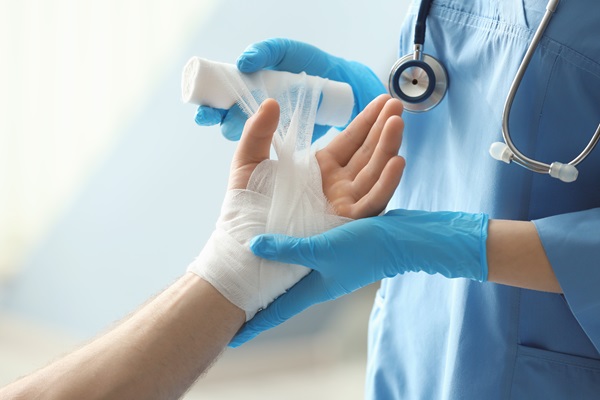Visit an Urgent Care For Laceration Repair

Looking for information on laceration repair? Read on to learn more about how urgent care centers handle this emergency. Lacerations are deep cuts or tears in the skin. This issue, often resulting from accidents, requires prompt medical attention and leaves patients wondering where to go for laceration repair: the emergency room or the urgent care center. Although severe cases require a visit to the emergency room, patients can visit the urgent care center in most scenarios. Knowing the specifics of lacerations and how urgent care centers approach treatment can help you when faced with this issue.
Can I visit urgent care for a laceration repair?
Lacerations occur in different forms, ranging from minor surface cuts to severe wounds that penetrate the skin down to the muscles and tissues. Common causes of lacerations include accidental cuts with kitchen knives, work-related accidents, or falls around rocky paths. Fortunately, urgent care centers have the right professionals and resources to handle non-life-threatening emergencies such as laceration repair.
These healthcare facilities offer effective and timely treatments, saving patients from the long wait times that are common in emergency rooms. Patients can learn about the treatment scope so they can make the right decision about their health and get the right treatment.
When to visit the urgent care center
Patients can visit urgent care centers for laceration repair when their wound is not life-threatening but still requires professional medical care. Such cases include:
- Deep cuts: If the cut is deeper than half an inch, it means the injury is beyond the skin’s protective layer. Urgent care can resolve this issue.
- Bleeding: If the bleeding does not stop despite applying pressure for up to 10 to 15 minutes, then a medical professional needs to examine the wound.
- Jagged edges: Uneven, torn lacerations can result in delayed healing and increased infection risk. At the urgent care, the medical professional will use closure techniques to initiate healing.
- Sensitive areas: Patients can also visit the center for facial cuts, those close to joints, eyes, or genitalia, as they require treatment by experienced professionals.
- Foreign objects: If there is debris or objects embedded in the wound, it demands skilled extraction.
These issues can be treated efficiently in the urgent care center. Remember, while urgent care can handle most non-threatening injuries, severe trauma or critical emergencies require the comprehensive resources of an emergency room. Patients need to discern the nature of the wound and choose the right place.
The process of laceration repair
After getting to the urgent care center for laceration repair, the medical professional will first examine the wound. They will check the depth, severity, and potential risks. The result of this assessment guides the next steps of the treatment.
The next step is to step the wound carefully, including removing any foreign material that might be lodged in there. The depth and severity of the wound will determine the closure technique used. Common options include sutures, staples, and skin adhesives. The doctor may use local anesthesia to reduce discomfort during the process.
After laceration repair, patients will get a comprehensive guideline on how to care for the wound at home. The instruction includes how to check for signs of infections and when to visit for follow-up appointments and stitch removal if necessary. Adhering to the follow-up instructions ensures hitch-free healing and recovery.
The benefits of choosing urgent care
Besides the convenience of visiting urgent care for laceration repair, there are other benefits of this decision, including:
- Timely treatment: Urgent care centers generally have shorter wait times. Patients do not have to sit around in drafty emergency rooms. Getting quick treatment means the discomfort stops sooner and gets individuals on their journey to recovery in no time.
- Cost-effective treatment: These centers typically offer more budget-friendly treatments compared to emergency rooms. When dealing with non-life-threatening lacerations, it is the more economical option.
- Convenience: With these centers, patients do not have to deal with rigid schedules and inconvenient hours. Many urgent care centers open beyond regular office hours and sometimes on weekends. This ensures patients have access to medical care in case of an emergency that occurs outside a doctor’s regular office hours.
- Personalized care: Unlike emergency rooms that tend to get crowded, patients can visit urgent care for a more personalized experience. The professionals available will listen to the patient’s concerns and get dedicated care.
The bottom line
Visiting the urgent care center for laceration repair is a great decision after experiencing non-severe wounds that require immediate attention. These facilities offer efficient care and a patient-centric approach. Knowing how urgent care centers manage lacerations can ensure individuals make informed decisions about their healthcare needs.
Call us today at (832) 941-1894 for more information from Texas Urgent Care & Imaging Center.
Check out what others are saying about our services on Yelp: Laceration Repair in New Caney, TX.
Recent Posts
Walk-in clinic provide convenient, accessible health care for non-emergency medical needs, making it an ideal choice when immediate attention is necessary. Understanding when to visit a clinic can help patients save time, avoid unnecessary trips to the emergency room, and receive quality care for their health concerns. These clinics handle various issues, offering fast, professional…
Walk-in clinics provide minor illness treatment for patients seeking quick and effective healthcare to address their symptoms. These accessible facilities address non-emergency medical concerns without the need to wait days for the next available appointment. The following guide will review some of the most common minor illness treatments offered at walk-in clinics.Respiratory tract infections (RTIs)…
Ultrasounds are non-invasive diagnostic tools used in urgent care and primary care settings to assess various medical conditions. With these images, healthcare providers can identify and evaluate potential health concerns. Understanding when ultrasounds are necessary and what to expect during them can empower patients to make informed decisions about their care.An ultrasound diagnostic scan uses…
A pregnancy testing is one of the most effective ways to confirm pregnancy by detecting the hormone human chorionic gonadotropin (hCG) in urine or blood. In order to produce reliable results, it is important to understand the accuracy, timing, and different options of tests. While many people rely on over-the-counter pregnancy tests, it is important…


